site search
online catalog
1819 HALL PERCUSSION CONVERSION RIFLE

Hover to zoom

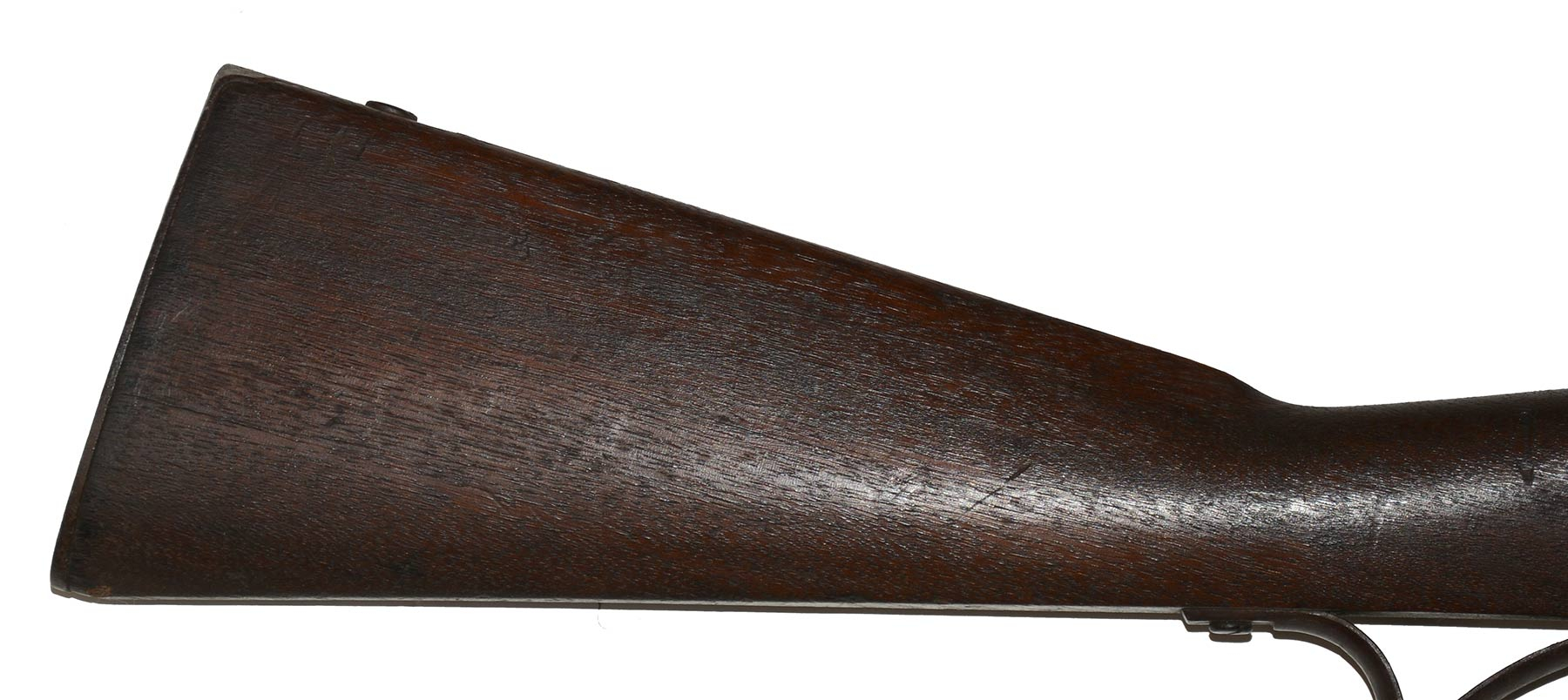
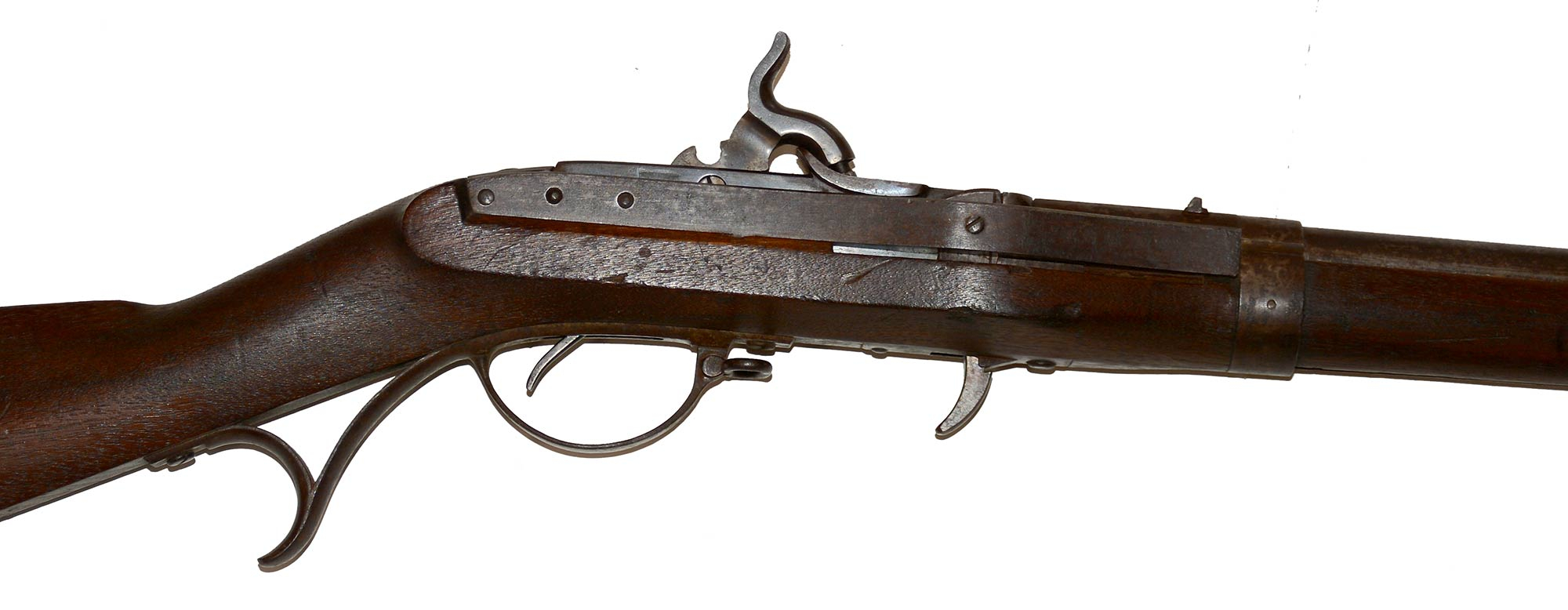

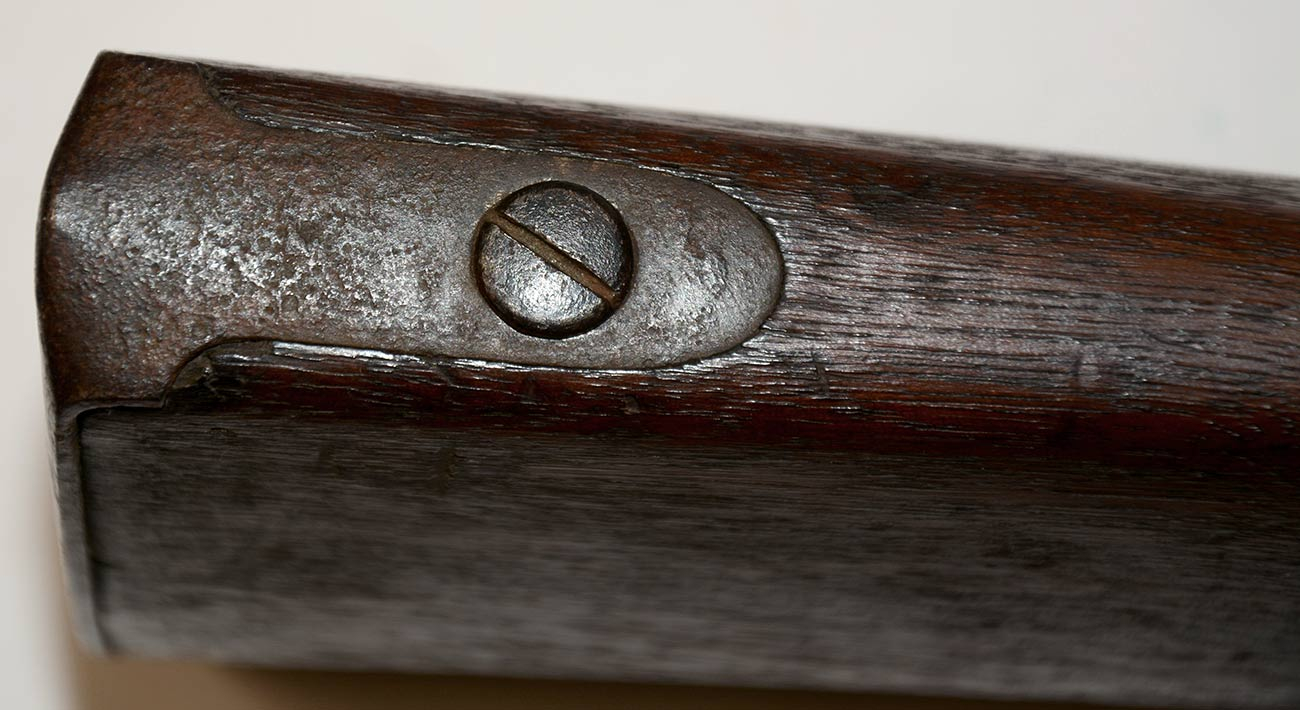

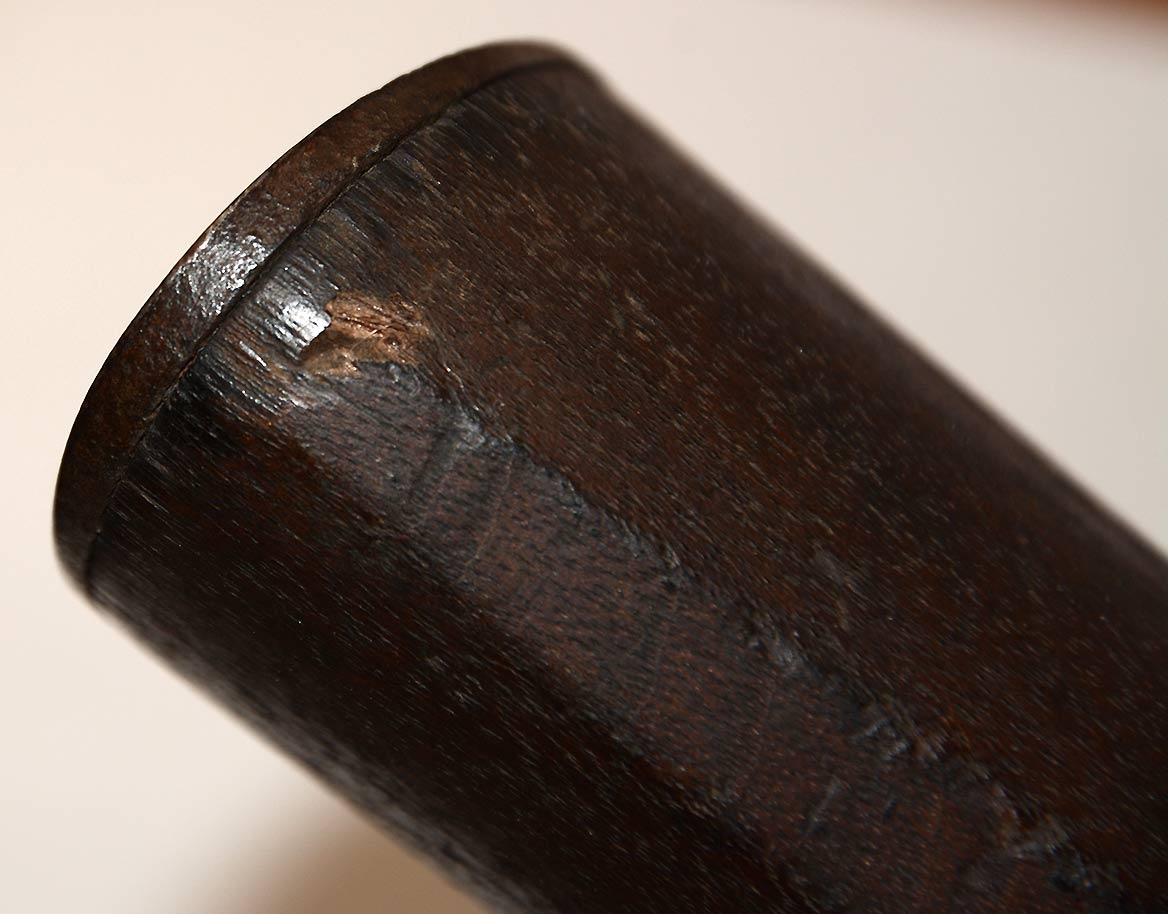

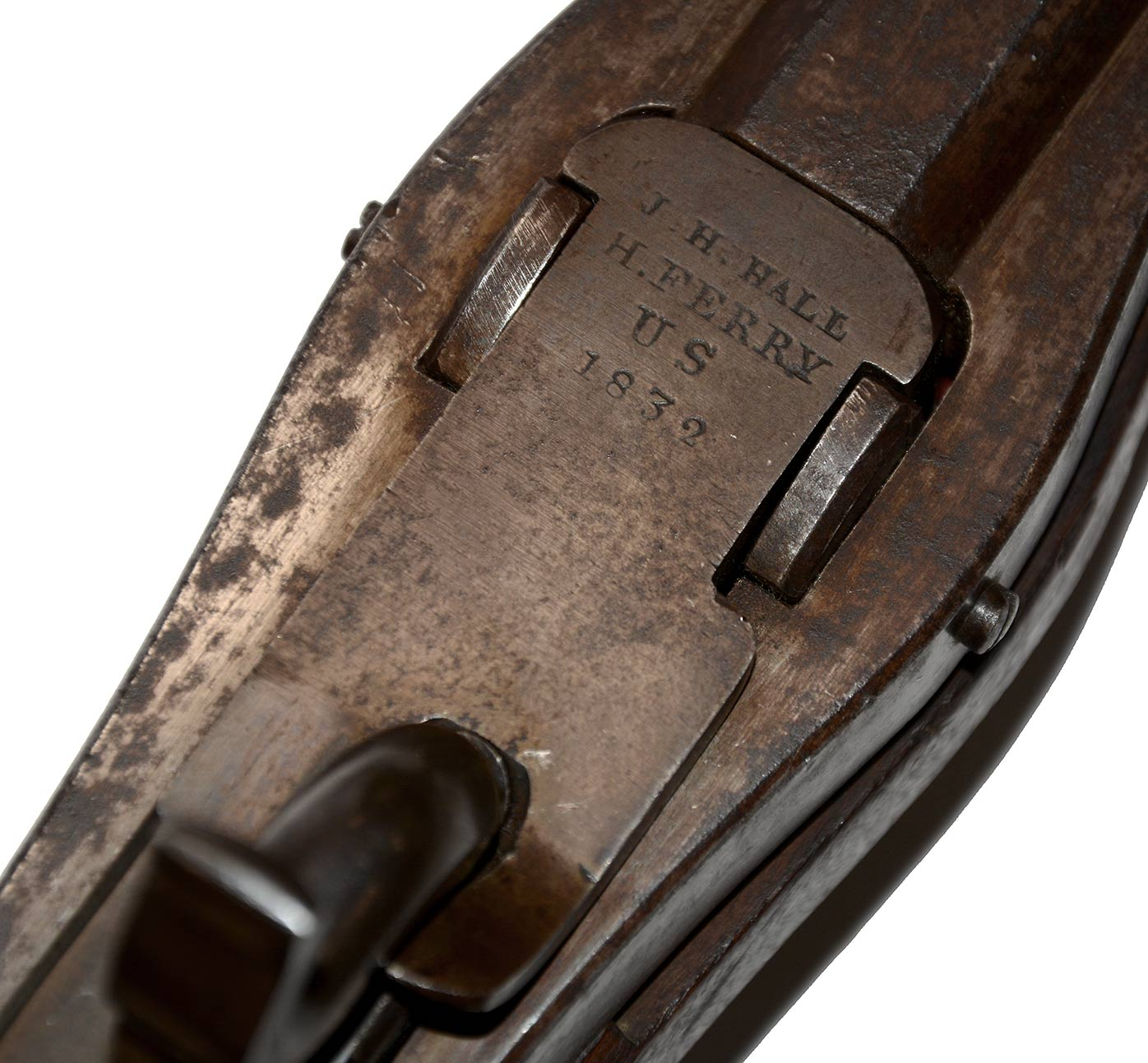
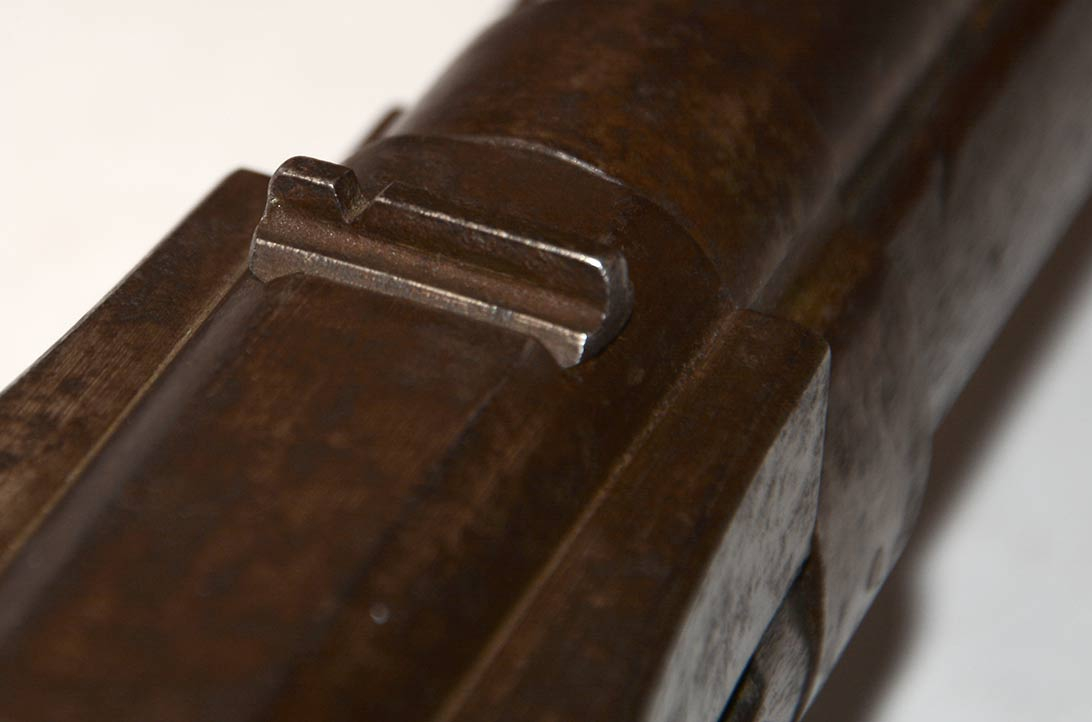


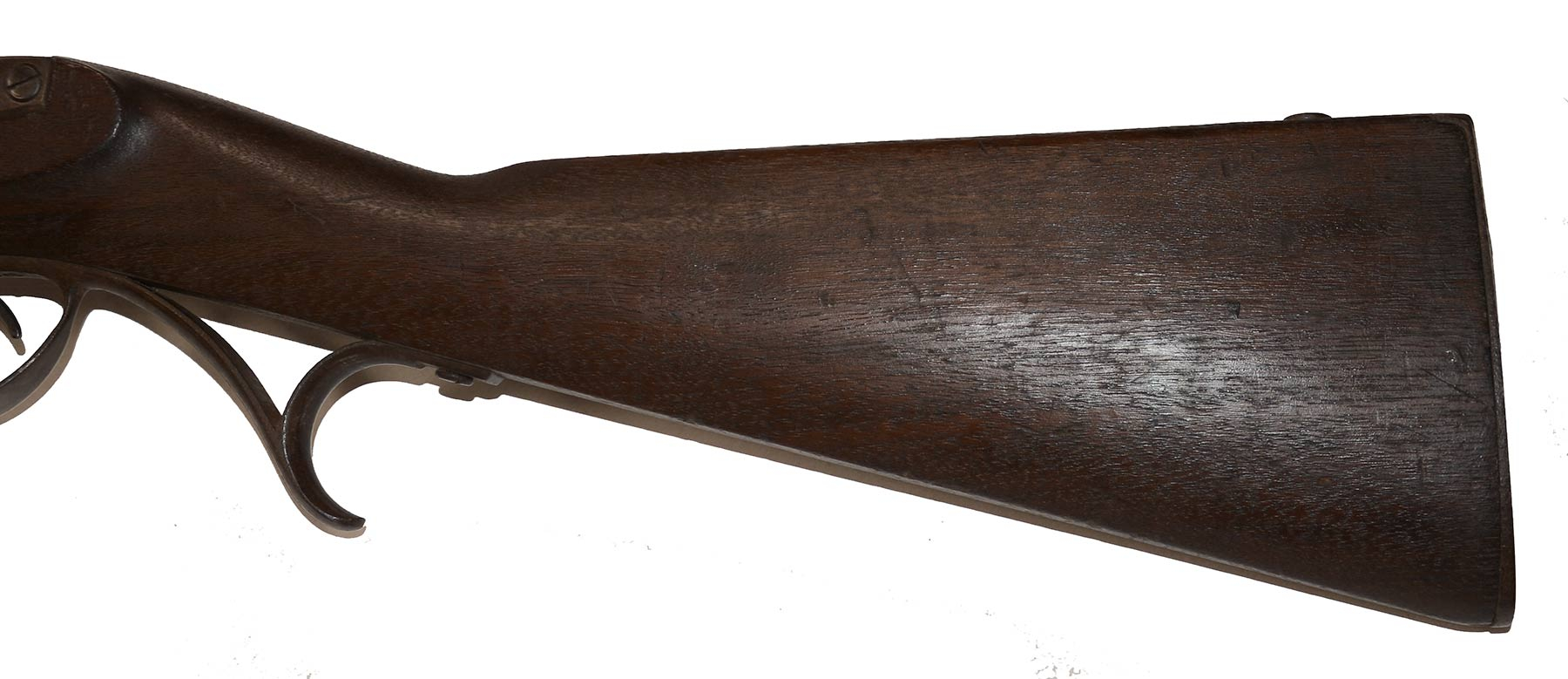


$2,750.00 SOLD
Quantity Available: None
Item Code: 490-3496
This is a strong example of the Hall M1819 breechloading rifle as altered from flint to percussion under Federal auspices early in the Civil War. The rifle is complete and all original, with swivels, bands, sights and rod in place. The wood has good surface and color overall. The buttstock has a good fit to the buttplate and good edges along the belly and forward along the triggerguard, etc. The flats below the side bars at the breech have good edges, though showing two or three checks along the bottom on the right and some bumps and scratches on the flat itself on the left. The forestock shows some minor dings and handling marks, with a shallow divot or pressure dent on either side just behind the middle band and a short, tight hairline on the right just forward of it. The rammer/cleaning rod channel is good, showing just some wear from the rod between the lower and middle band. Barrels were refinished in brown when they were altered and this shows as a mix of brown and gray. The receiver shows a mix of bluish gray and dull silver from casehardening as does the block, with stronger thin blues on the rear of the block and hammer.
Halls are significant in the development of American military arms and industrial development in general. As a weapon, they were first military breechloader adopted by the U.S., and also rifled, thus promising better range and accuracy than a smoothbore musket, without sacrificing rate of fire, while also mounting a bayonet for close combat. For manufacturing Hall demonstrated the feasibility and advantage of interchangeable parts, which were also made entirely by machines, and he played a part in the adoption of standardized screw threads.
For details see Hall’s Military Breechloaders by Schmidt, who estimates no less than 5,000 Hall rifles dated 1830-1832 were altered to percussion like this in 1861-1862 and likely intended as a reserve for emergency issue to state troops. Records are lacking, but the work was clearly done, in Schmidt’s words, “by a competent firm with experience in this kind of work,” most likely at a state arsenal or private armory under contract. The guns were not only altered to percussion by modifying the breechblock, but taken apart for refinishing and numbered for reassembly in several manners, all similar to government percussion alterations of the 1850s. The differences in numbering need not indicate different facilities and the hammers all came from one source, but lack the notch on front adopted by the government, reinforcing the idea of a private contractor of some sort.
The actual alteration was pretty simple: the external flintlock elements were removed from the block and the flash pan was ground flush with the top of the breech block at the front where the frizzen was pivoted, leaving the fence at the rear of the pan, and the recess for the frizzen was filled. A short hole was then drilled just to the right of the original vent hole and tapped for a nipple and the new hammer installed. There was no effort made to alter the original .52 caliber or remove the original markings on the top of the block. In this case the lower edge of the date is slightly rubbed, but the rest of the stamping is sharp: J.H. HALL / H. FERRY / US / 1832, indicating it is one of 4,360 produced that year in the rifle works at Harpers Ferry under Hall’s unique arrangement with the U.S. government for supervising production. Action works well; bore has good rifling with scattered minor pitting.
Hall arms are an interesting collecting area of their own, spanning several U.S. conflicts and including variants of both rifle and carbine. The alterations are no less an important part of the story, encompassing not only this northern effort to keep these arms in service, but a number of different southern attempts as well, offering the collector an interesting variety in any display of these important arms. [sr] [ph:L]
DISCLAIMER: All firearms are sold as collector's items only - we do not accept responsibility as to the shooting safety or reliability of any antique firearm. All firearms are described as accurately as possible, given the restraints of a catalog listing length. We want satisfied customers & often "under" describe the weapons. Any city or state regulations regarding owning antique firearms are the responsibility of the purchaser. All firearms are "mechanically perfect" unless noted, but again, are NOT warranted as safe to fire.
~~~~~~~~~~~~~~~~~~~~~~~~~~~~~~~~~~~
THIS ITEM, AS WITH ALL OTHER ITEMS AVAILABLE ON OUR WEB SITE,
MAY BE PURCHASED THROUGH OUR LAYAWAY PROGRAM.
FOR OUR POLICIES AND TERMS,
CLICK ON ‘CONTACT US’ AT THE TOP OF ANY PAGE ON THE SITE,
THEN ON ‘LAYAWAY POLICY’.
THANK YOU!
Inquire About 1819 HALL PERCUSSION CONVERSION RIFLE
Most Popular
Historical Firearms Stolen From The National Civil War Museum In Harrisburg, Pa »
Theft From Gravesite Of Gen. John Reynolds »
Selection Of Unframed Prints By Don Troiani »
Fine Condition Brass Infantry Bugle Insignia »
Large English Bowie Knife With Sheath 1870’S – 1880’S »
Imported (Clauberg) Us Model 1860 Light Cavalry Officer's Saber »
featured item
CONFEDERATE GENERAL THOMAS “STONEWALL” JACKSON’S SIGNED, PERSONAL COPY OF A COMPLETE TREATISE ON FIELD FORTIFICATIONS
Thomas "Stonewall" Jackson Signed Copy of His West Point Textbook, A Complete Treatise on Field Fortifications. The future Confederate general's bold signature, signed "Thos. J. Jackson" ca. 1846, occurs at the top of the front free endpaper. The… (1179-682). Learn More »


